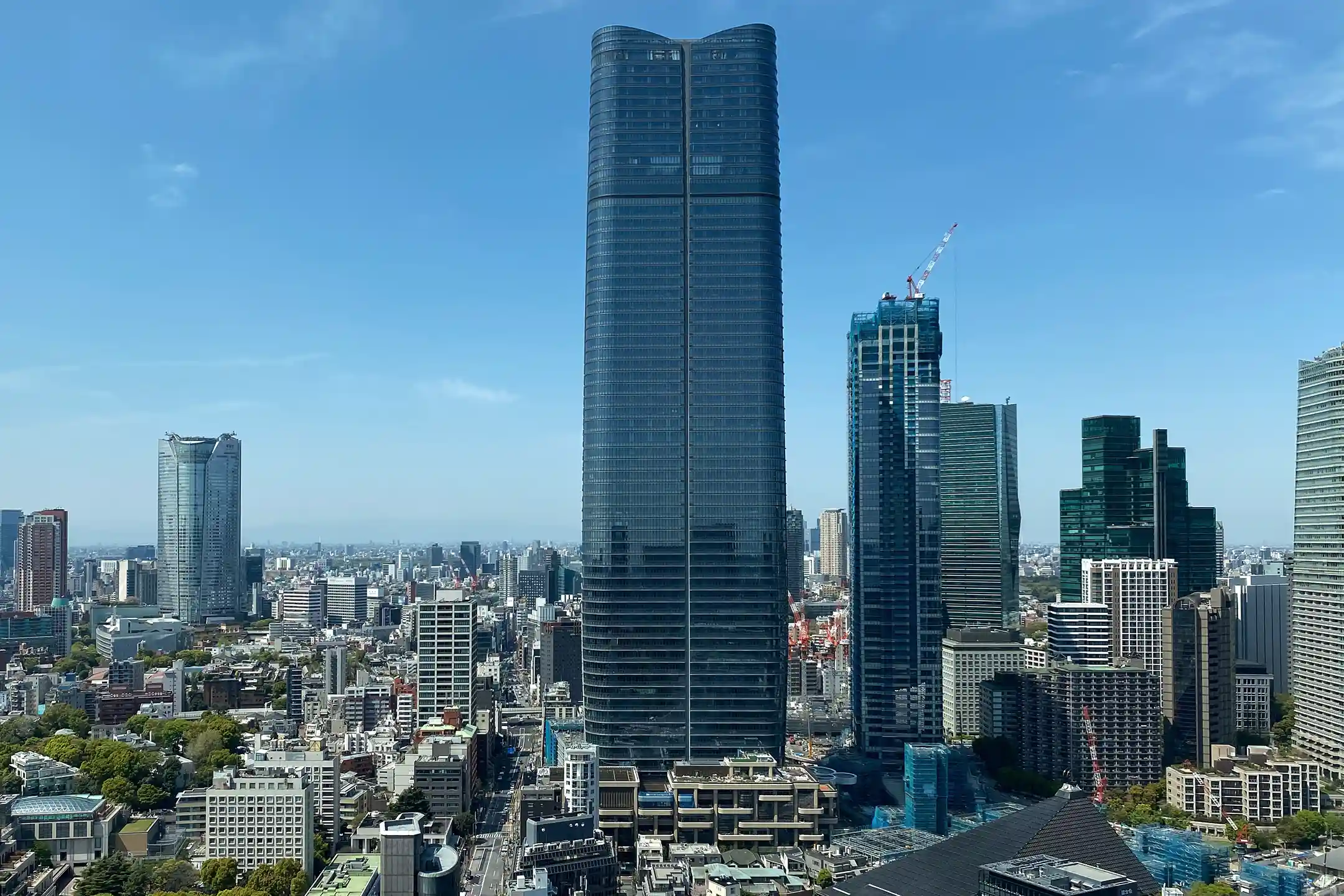Tokyo is a gourmet capital where the culinary traditions of Japan converge. Among its many treasures, Kobe Beef stands out with an unparalleled presence, captivating visitors as one of the most highly acclaimed meats in the world. In this article, you’ll explore Kobe Beef’s history and grading standards, discover the finest restaurants and cultural experiences in Tokyo, and even learn sustainable ways to enjoy this ultimate dining journey.
The History and Brand Value of Kobe Beef
Origins and Distinctive Qualities of Kobe Beef
Kobe Beef refers to a title granted only to select carcasses of Tajima cattle—purebred black-haired Wagyu raised in Hyōgo Prefecture—that meet strict criteria. The cattle must be female or castrated males, graded A or B for yield, with a meat quality score of 4 or higher, and a marbling score (BMS) of 6 or above (*1)(*3).
The Tajima lineage has been carefully preserved since the Edo period, when cattle were primarily used for farming. With the opening of Kobe Port in the Meiji era, foreign merchants discovered its exceptional quality, and the name “KOBE” spread across the globe (*1).
In 1983, the Kobe Beef Marketing & Distribution Promotion Association was established, creating official brand standards and traceability systems that ensure strict quality control to this day (*1).
Kobe Beef is raised over a long fattening period of around 30–32 months, nurtured with clean water, nutrient-rich feed, and minimal stress. This careful rearing results in exquisite marbling that melts on your tongue, while the lean meat carries a refined, aromatic flavor (*2). These unique philosophies in breeding and lineage management are what make Kobe Beef celebrated as “the world’s finest beef.”

Grading Standards and Global Recognition
Only about 7,000 heads of cattle are certified annually, representing less than 0.2% of Japan’s total beef distribution (*2). The Japan Meat Grading Association evaluates beef across four categories—marbling, meat color, texture, and fat quality—using a five-point scale. The lowest score becomes the final grade, ensuring rigorous assessment (*3). This strict process underpins Kobe Beef’s extraordinary brand value, with trading prices far exceeding other Wagyu.
Since its first export to Macau in 2012, Kobe Beef has reached the U.S., Europe, and the Middle East (*4). International media consistently describe it as “the world’s most expensive and rarest beef” (*5). Yet, exports remain extremely limited, increasing its scarcity. To protect the brand, the Kobe Beef Marketing & Distribution Promotion Association introduced a certification system for official overseas retailers, further safeguarding its value.
Why Enjoy Kobe Beef in Tokyo
Accessibility and a Wide Variety of Restaurants
As Japan’s capital, Tokyo is a gourmet hub where Kobe Beef–registered restaurants and Michelin-starred teppanyaki establishments gather. The reservation platform Ikkyu.com alone lists around 190 restaurants offering Kobe Beef (*6).
Dinner courses range from ¥20,000–30,000, while lunch starts at around ¥6,000–8,000, with many venues offering instant online reservations and English menus. This makes it easy to plan an authentic Kobe Beef experience, even on a short stay.
Access is also seamless: from both Haneda and Narita airports, central Tokyo restaurants are just a train ride away, making Kobe Beef experiences convenient for business or leisure.

Where Tradition Meets Urban Sophistication
In Tokyo, dining on Kobe Beef often goes beyond the meal itself, transforming into a cultural experience. For instance, “Kobe Beef 512” in Akasaka offers a modern Japanese setting with wood lattice and earthen walls, serving A5/BMS12 beef in kaiseki or teppanyaki style. Private rooms let you enjoy the thrill of chefs grilling your beef right before your eyes (*7).
At long-standing teppanyaki houses in Ginza, you might sit around a brick counter, captivated as skilled chefs prepare Kobe Beef steak with precision fire control.
Some restaurants even cater to halal dining needs. Near Tokyo Station, a dedicated venue offers halal Kobe Beef courses under the motto “Kobe Beef for Everyone,” making it accessible to Muslim guests (*8).
Many restaurants also feature tatami rooms and tea house–inspired spaces, creating a blend of Tokyo’s urban elegance with traditional Japanese tranquility. This seamless harmony of “urban convenience × traditional beauty × culinary mastery” is precisely what makes enjoying Kobe Beef in Tokyo so special.
Curated Kobe Beef Restaurants in Tokyo
Three Must-Book Icons
Kobe Beef 511 (Akasaka) – A world-renowned teppanyaki steakhouse specializing in Kobe Beef. The chefs personally source top-grade cuts, carefully grilled over Binchōtan charcoal. Set in refined all-private dining rooms with bilingual staff and English menus, the restaurant also offers pairings with over 300 wines. Reservations are essential—its signature Kobe Beef steak course is an unforgettable indulgence (*1).
Aragawa (Shimbashi) – Known as the “phantom steakhouse,” this legendary Kobe Beef institution is tucked away in a basement, exuding quiet luxury with Nishijin-ori wallpaper and cherry wood chairs. Its signature charcoal-grilled steaks use only long-fed Tajima cattle raised over 36 months. Although English support is limited, Aragawa remains legendary among international gourmets as one of the world’s most exclusive dining experiences (*2).
Seryna Main Branch (Roppongi) – Founded in 1961, this high-end establishment blends Japanese cuisine with Kobe Beef specialties. As a certified Kobe Beef restaurant, it serves only the finest cuts from the 4,000 or so cattle certified annually. Here, you can enjoy Kobe Beef shabu-shabu, sukiyaki, or teppanyaki alongside seasonal Japanese dishes, with full English menus and professional wine service. Frequented by VIPs and celebrities, advance reservations are a must (*3).

Tips for Choosing the Right Restaurant
- Know the Basics: Kobe Beef is carefully selected from Tajima-bloodline Wagyu. Only female or castrated cattle, graded 4 or above in quality and BMS 6 or above, earn the “Kobe Beef” title. With only 5,000–5,500 cattle certified annually, its rarity enhances its prestige (*4). Each carcass is issued a “Certificate of Kobe Beef” with a 10-digit ID, enabling full traceability from birth to distribution (*5).
- Choose Your Style: Kobe Beef can be enjoyed in teppanyaki, sukiyaki, or shabu-shabu. Teppanyaki offers the live thrill of grilling—a modern style born in Kobe at “Misono” in 1945 (*6). Sukiyaki, which evolved in the Meiji period, offers sweet-savory flavors dipped in raw egg. Shabu-shabu, invented in Osaka in the 1950s, is a lighter style where thin slices are swirled in broth and dipped in ponzu. Each method has its own flavor and cultural story.
- Consider Practical Points:
– Look for certified restaurants to guarantee authenticity.
– Match your budget and dining style (teppanyaki is theatrical and premium, hotpots are convivial).
– Check language support, dress codes, and private room availability beforehand.
Respecting the etiquette of Japanese fine dining while savoring authentic Kobe Beef offers both cultural insight and an unforgettable sensory experience.
――――――――――――――――――
Experiential Events and Kobe Beef Seminars
Workshops on the Production Process
Around Tokyo, small-group workshops are gaining popularity, offering direct instruction from Wagyu masters. At “Wagyu Academy” in Roppongi, English-speaking instructors demonstrate butchery skills and explain the characteristics of Kobe Beef cuts in a butchery-show format for up to 10 participants. Afterward, you’ll sample yakiniku while learning about A5 grading and traceability in an interactive way (*1).

Cooking Classes and Tasting Sessions
In Asakusa, “Chagohan Tokyo” offers English-language classes where you’ll master Kobe Beef sukiyaki, from preparing the sweet-savory sauce to searing the beef just right (*2).
Meanwhile, the Ginza-based “Wagyu Beef & Sake Pairing” tour invites you to a 75-minute all-you-can-eat experience of A5 Wagyu, including Kobe Beef, paired with over 20 varieties of sake. This tasting allows you to explore how different cuts harmonize with various brews (*3).
With strong English support, these programs are ideal for beginners and enthusiasts alike, offering the chance to “know, cook, and taste” Kobe Beef—a cultural learning journey that stimulates all the senses.
――――――――――――――――――
Sustainable and Technological Ways to Enjoy Kobe Beef
Eco-Conscious Producers
Behind the luxury of Kobe Beef are producers committed to sustainability. At Yuge Farm in Rokko, Hyōgo Prefecture, cattle manure is converted into energy using small biogas systems, powering the farm’s heating and lighting. The byproducts become fertilizer for its gardens, creating a closed-loop system (*1).
At Usunaga Farm, also in Kobe, brewers’ byproducts like sake lees and beer mash are repurposed into feed. This reduces transport-related environmental impact while enhancing the beef’s umami flavor (*2).
Japan’s Wagyu industry also operates under a strict traceability law: each animal receives a 10-digit ID, and consumers can scan QR codes to trace the cattle’s history. This integration of digital management with producers’ eco-conscious methods is key to preserving Kobe Beef’s quality sustainably (*3).

Eco-Friendly Travel and Dining Choices
If you want to enjoy Kobe Beef sustainably in Tokyo, consider your travel and venue choices. Opt for public transport, hybrid cars, or EVs to minimize emissions.
Hotels like the Imperial Hotel Tokyo provide EV rapid chargers (50 kW), free for guests within 30 minutes (*4). The Prince Park Tower Tokyo and Hotel New Otani also offer multiple charging stations for EV drivers (*5).
From April 2025, Tokyo will mandate EV chargers in newly built commercial facilities over 2,000 m² (*6). On the dining side, some restaurants reduce food waste by designing courses that use whole cuts or offering flexible portion sizes (*7).
Traveling by EV, staying at green-certified hotels, and dining at eco-conscious restaurants will allow you to savor Kobe Beef while keeping your journey sustainable.
Expanding Your Kobe Beef Journey into Tokyo’s Art & Culture
Design Hotels and Museums
A Kobe Beef journey is already a cultural experience, but in Tokyo, you can pair it with immersive art and design encounters. At Park Hotel Tokyo in Shiodome, the entire hotel is conceived as a museum, with about 400 works displayed throughout. On the 31st floor, “Artist Rooms” are fully decorated by Japanese artists, turning your stay into a living art installation (*1)(*2).
For contemporary art, the Mori Art Museum on the 53rd floor of Roppongi Hills offers world-class exhibitions spanning fashion, architecture, and design. Its café, “THE SUN & THE MOON,” serves menu items inspired by ongoing exhibitions, paired with breathtaking Tokyo views (*3)(*4).
In Ginza, combine Kobe Beef steak with architectural strolls through Wako Main Building or Ginza Six. In Omotesando, visit the Nezu Museum, designed by Kengo Kuma, where Japanese aesthetics and modern design blend beautifully.

Encounters with Local Artists
Tokyo also has restaurants where culinary artistry meets fine art. At “Paris Yugao/Fujitsubo” in Shimbashi, you’ll dine on Kobe Beef from Kawagishi Farm surrounded by Emile Gallé lamps and Japanese paintings, immersing yourself in both Art Nouveau and Japanese aesthetics (*5).
At Azabudai Hills, the gallery-restaurant “Butaiura” integrates an exhibition space with an open kitchen, encouraging dialogue between diners and artists in a unique social setting (*6).
In spring 2025, Janu Tokyo hosted a lounge collaboration with contemporary artist Tomokazu Matsuyama, serving afternoon tea inspired by his vibrant artworks (*7). These venues not only let you savor Kobe Beef but also connect you with Tokyo’s creative spirit.
Conclusion: Maximizing the Allure of Kobe Beef in Tokyo
Experiencing Kobe Beef in Tokyo goes far beyond fine dining—it becomes a cultural and emotional journey. From its storied history and rigorous grading standards to its extraordinary rarity, Kobe Beef justifies its reputation as “the world’s finest beef.”
In Tokyo, you can savor it in countless ways: traditional teppanyaki, sukiyaki, or shabu-shabu; restaurants offering English menus and halal options; or immersive workshops that let you cook and taste while learning about its background.

You can also align your Kobe Beef journey with sustainability, from EV-friendly hotels to eco-conscious restaurants, and enrich it with Tokyo’s vibrant art and design scene.
Through Kobe Beef, you’ll not only experience Japan’s culinary pinnacle but also discover Tokyo’s cultural sophistication, environmental innovations, and artistic encounters. It’s a journey that promises both profound learning and unforgettable memories.
Author Bio

Experienced in B2B SaaS marketing and “omotenashi,” Natsumi directs media operations with a focus on hospitality and cultural storytelling. Her global experience and marketing skills bring fresh value to Bespoke Discovery’s content.


.webp)
.webp)

